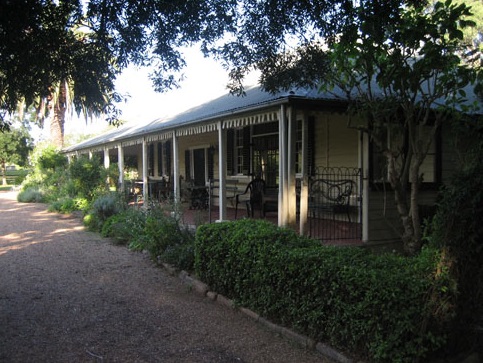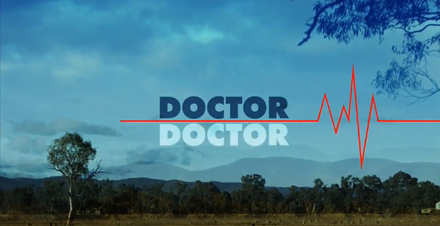COBBITTY
Location:
Cobbitty is a rural town of the Macarthur Region near the town of Camden, southwest of Sydney, and is located 60 kilometres (37 miles) from the Sydney CBD.
One explanation is that the name is of Aboriginal origin, first recorded as Kobbatty and is said to have referred to nearby hills. Another explanation is that Governor Macquarie named the area Cobbedee and, when Gregory Blaxland was given a grant there in 1812, he called it Cubbady Farm.
About:
The area is largely farmland and agricultural, with houses along Cobbitty Road forming a small village.
Main street
At the 2016 census, Cobbitty had a population of 2,063 people. A large proportion (79.0%) of these people were born in Australia.
At the southern end of the suburb, bordering the Nepean River is Camden Airport, a site for gliding and skydiving.
Camden Airport
The fertile land of Cobbitty was granted to settlers by the mid 1810s and became a rich farming area. The Hassall family had a number of farms in the area.
View of the farm of J Hassall, 1825
In 1827 the Reverend Thomas Hassall was given the parish of Narellan, which included Cobbitty. There was no church building from which to conduct his ministry and he stayed with his brother at Macquarie Grove. Following the death of Charles Hook, Hassall acquired Denbigh, and as the house there was almost completed he used the materials he had been acquiring for a new house to build Heber Chapel on Pomare Grove (named after the Tahitian chieftain Pomare), a grant obtained for him by his father in 1817. Heber Chapel was dedicated in 1828 by Hassall's father-in-law, the Reverend Samuel Marsden.
Reverend Thomas Hassall, c 1866
Rev Thomas Hassall was known as “the Galloping Parson” for his fondness of fast horses, Thomas Hassall was an early minister, and landowner, in Cobbitty.
Reverend Samuel Marsden, 1833, father in law of Reverend Thomas Hassall.
Marsden (1765 – 1838) was an English-born priest of the Church of England in Australia and a prominent figure in early New South Wales and Australian history, partly through his ecclesiastical offices as the colony's senior Church of England cleric and as a pioneer of the Australian wool industry, but also for his employment of convicts for farming and his actions as a magistrate at Parramatta, both of which attracted contemporary criticism.
Although dubbed “the Flogging Parson” and so remembered by history for the harsh punishments meted out by him as a magistrate, there are contrary views:
In 1817, Governor Macquarie alleged that Samuel Marsden was an especially severe magistrate, a claim widely repeated in subsequent histories. And yet, if measured against other magistrates in the Macquarie era, Marsden sentenced convicts to a flogging less frequently and ordered typical numbers of lashes. The myth of Marsden as the flogging parson developed in the writing of Marsden's political enemies, grounded in his popular reputation as a brute and a hypocrite. In a context of growing humanitarian and criminological opposition to corporal punishment, Marsden's incongruous responsibilities to preach and punish convicts became a scandalous anachronism.- Abstract of an article by Matthew Allen, 2017: The Myth of the Flogging Parson: Samuel Marsden and Severity of Punishment in the Age of ReformAustralian Historical Studies
Gallery:
St Paul's Anglican Church, Cobbitty c1880
The church was consecrated in 1842 and is one of the earliest intact church buildings in NSW.
St Paul’s Anglican Church and Cemetery today
Inside St Paul’s
Denbigh at Cobbitty
The original owner was Charles Hook, who had been imprisoned by the rebel government for supporting Governor Bligh's attempt to control the military in New South Wales. He received his grant in 1812 by Governor Macquarie (Bligh's successor). The construction of Denbigh house was completed c1822. Hook died in 1826 and the property was then purchased by parson Thomas Hassall who began extending the homestead in 1827. It has been used as a working farm & Clydesdal horse stud, dairy farm, vineyards and Ayrshire cattle stud. The current use is as a working farm & Hereford stud. Denbigh has heritage classification and is of State significance as an intact example of a continuously functioning early farm complex (1817-1820s) on its original 1812 land grant.
Marge McIntosh in her bridal gown photographed in the garden of her home at Denbigh Cobbitty for her wedding on 25 August 1928. Denbigh remains owned by the McIntosh family.
Interesting fact:
Popular Australian drama series Doctor Doctor is partly filmed on the historic Denbigh homestead in Cobbitty.
Featured Doctor Doctor sets at Denbigh include the homestead, the front yard, the dam and barn brewery. The show follows the high-flying heart surgeon Dr Hugh Knight as he is forced to work for a year as a country GP in his hometown of Whyhope as punishment from the Medical Tribunal.
Picnic at Cobbitty, NSW in the 1930s by Sam Hood
Interesting that men wore ties and suits in those days to go on a picnic.
Cobbitty Bridge by Arthur Baker, 1954
View along Cobbitty Road, 1928
Heber Chapel School at Cobbitty, 1868.
Heber Chapel was constructed by Reverend Thomas Hassall and was dedicated by Reverend Samuel Marsden in 1828.
From:
As a result of conflict and reduction in accessible lands, most Aboriginal people scattered out of the region. Some stayed mixing work on settler’s properties with a traditional lifestyle. Thomas Hassall, an Anglican Clergyman and owner of the property ‘Denbigh’, supported the Aboriginal people who came to him. He was something at odds with other landowners and his father-in-law Samuel Marsden, who viewed Aboriginal people with contempt. Hassell hosted the Aboriginal people who occasionally worked on his property in exchange for food. His son, James Hassall, also recalled witnessing a corroboree on the property attended by around 200 Aboriginal people (Hassell, 1902), the vast majority of which would most likely have been from other areas.By 1858, the magistrate in Campbelltown stated that the last of the Aboriginal people in that area had died from natural causes and the magistrate in Picton mentioned that only 67 of the original population remained. Those that survived to the beginning of the twentieth century were placed on reserves such as La Perouse, on the north shores of Botany Bay that was established in 1878.Some Aboriginal people who stayed in the area adopted European practices, such as ‘Nellie’ who liked to dress in European clothes.The number of Aboriginal people in the area has increased considerably since 1970, with the 2011 Census indicating 1118 people identifying as Aboriginal in the Camden LGA. A keen interest in the culture has also begun to thrive. A person of particular impact is Frances ‘Aunty Fran’ Bodkin, a Tharawal Elder who was named as one of the 100 most influential Aboriginal women in the last 100 years by the National Aboriginal and Torres Straight Islander Women’s Alliance (Armstrong, 2011). She has been particularly active in recent years with workshops to inform residents of the first people of the area. In 2011, the Mygunyah Camden Aboriginal Residents Group was formed, the aim of the group being to raise the profile and awareness of Aboriginal people and culture in the Camden area.
Cobbitty Village Markets
held 1st Saturdays of the month March to December
























No comments:
Post a Comment
Note: Only a member of this blog may post a comment.